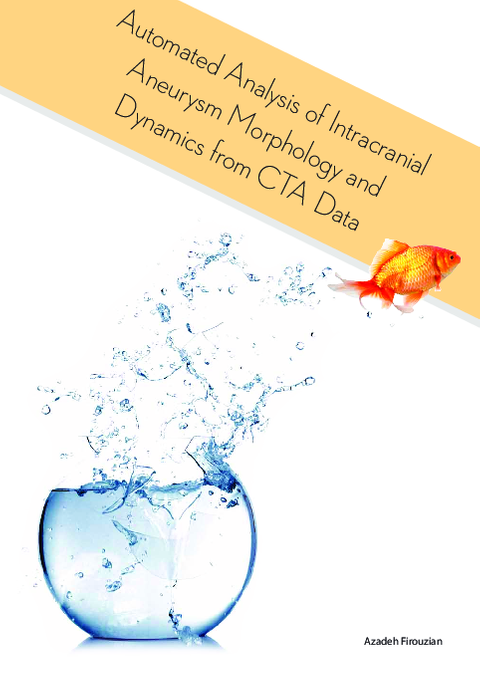Automated Analysis of Intracranial Aneurysm Morphology and Dynamics from CTA Data
A. Firouzian
- Promotor: W. Niessen
- Copromotor: R. Manniesing
- Graduation year: 2013
- Erasmus University Rotterdam
Abstract
The focus of the research presented in this book is on morphometry and morphodynamic analysis of intracranial aneurysms in CTA using automated methods. The first step for such analysis is segmentation of aneurysm from other structures present in the image. Therefore, a novel semi-automatic segmentation method, implemented in the level set frame work, has been developed and validated. Further, the dynamic behavior of the aneurysm has been analyzed over a heart cycle using ECG-gated CTA. To quantify this behavior, a combination of the previously developed segmentation method and 4D registration was used. The results showed similar trend in aneurysm volume change as in arterial pulse wave and potential rupture areas on the aneurysm with large displacements were detected. This analysis provides additional information on the status of the aneurysmal wall AC/a,!A 1/2 which, together with other geometrical information, may help to better estimate aneurysm growth and predict rupture risk. Dynamic behavior was also investigated over a longer period of time to quantify growth and growth rate in a longitudinal CTA study. Again a combination of the previously developed segmentation method and groupwise registration was used. The method uses all the information from all follow-up scans simultaneously and gives better results than when performing measurements on each scan individually. This method can benefit the clinical diagnosis and treatment planning in the sense that the results are objective and quantitative. For future studies, further attention is to be paid more to the areas of automated aneurysms detection and bone masking in CTA. Fusing these two tools with the previously developed ones will make a big step forward in intracranial aneurysms diagnosis and treatment.
